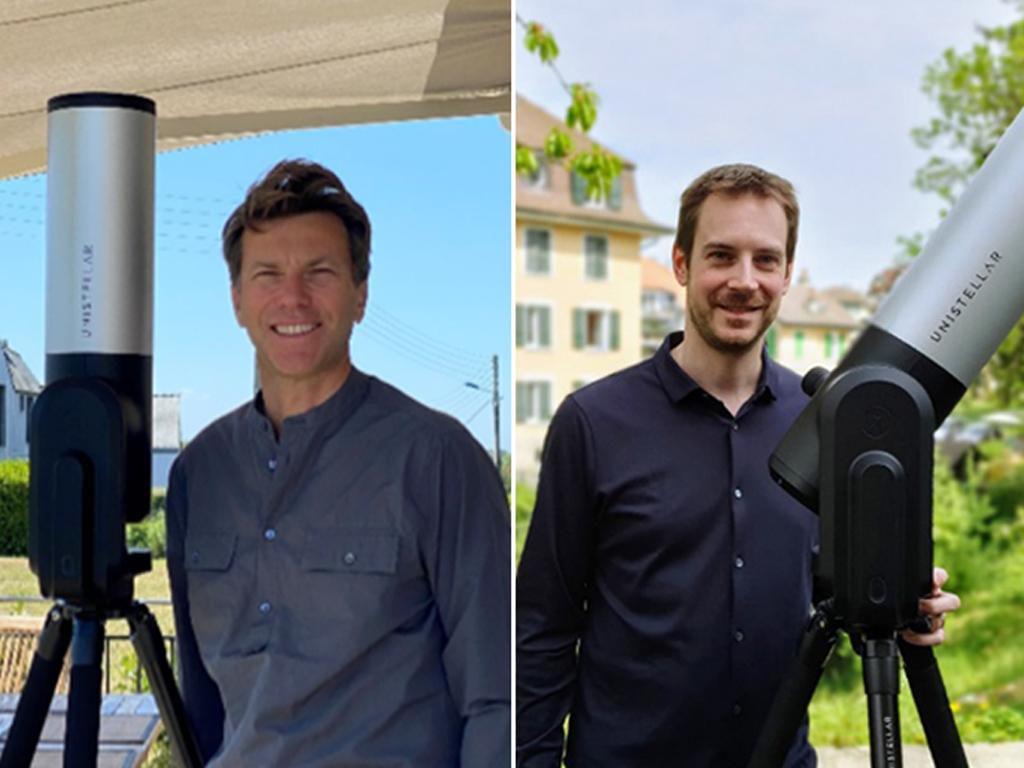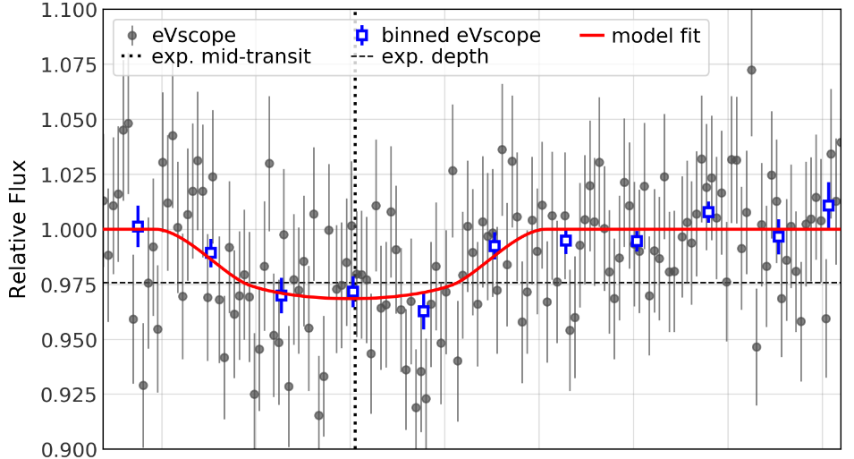
June 11, 2020, Mountain View and Marseille -- Citizen science pioneers recently made two contributions to a better knowledge of outer space. Backyard astronomers of the SETI Institute and Unistellar network conducted in April citizen science observations, and their discoveries will improve our understanding of asteroids and exoplanets. Thanks to their work, we know precisely the location of the main-belt asteroid 2000 UD52 and have confirmed an exoplanet transit of Qatar-1b.
Detecting an Asteroid Occulting a Star

After receiving an alert from SETI Institute scientists, on the night of April 9, Morand, a partner in a French strategy consulting firm, seized the opportunity to become an early pioneer in citizen science. He quickly set up his eVscope in his backyard in Western France. A few minutes later, he succeeded in detecting an occultation by main-belt asteroid 2000 UD52, which occulted a star that was visible with his eVscope. This observation provides new insights about this celestial object, including an accurate estimate of its location.
Here is how he described his experience:
“The occultation was very brief, 0.3s (the predicted maximum was 0.8s), therefore particularly difficult considering the small size of the asteroid (approximately 6.6 km) and the width of its centrality band. Having observers near and into the centrality band allowed us to better determine the position of the asteroid, and therefore refine its orbit! What a feeling!”
Check asteroid 2000 UD52 occulting a bright star in this video sequence:
Detecting an Exoplanet Transiting over its Star

The Citizen Science team is also monitoring transiting events involving Jupiter-size exoplanets. On the night of April 23, Julien, a consulting manager in a Swiss public office, received an alert and tried to detect the Qatar-1b gas giant exoplanet transiting its star. Again, his willingness to contribute to cutting-edge science was rewarded with the resulting light curve proving that a detection was achieved.
“It takes me back to my childhood, the day I learned about the discovery of the first exoplanet,” said Julien. “I was so excited, and never could I have imagined that it will one day be possible for me to detect an exoplanet myself!”

Both results have been submitted and are now stored on scientific data repositories so that astronomers around the world can access them. Euraster, the European Asteroidal Occultations network, published the positive detection of 2000 UD52 on its website. Unistellar network’s detections of exoplanet transits have been published by the American Association of Variable Star Observers (AAVSO) in partnership with the Exoplanet Watch program.
A New Era in Citizen Science
These two positive detections mark the beginning of a new era in amateur astronomy, where a network of backyard observers can contribute to real science, dedicating their time and passion to new discoveries.
“Enabled by the most revolutionary innovation in amateur astronomy to come along in decades, we are literally crowd-sourcing scientific discovery and cutting-edge astronomy,” said Bill Diamond, CEO of the SETI Institute. “The power of citizen science in astronomical observations made possible by the Unistellar eVscope has already demonstrated breakthrough results – and we’re only just getting started. As more users join our science team, the future holds unimaginable possibilities.”
The SETI Institute and Unistellar are working together to increase the network’s potential for scientific studies and new discoveries.
“18 asteroid occultation campaigns involving 65 backyard astronomers, and 18 transiting exoplanet events, have been reported just since February 2020. Passionate citizen scientists have uploaded more than 1 million data frames on our servers. “ said Franck Marchis, Senior Astronomer at the SETI Institute and Chief Scientific Officer at Unistellar. “Citizen scientists are pioneers directly contributing to current and future space exploration programs.”
About Unistellar
Unistellar is the start-up eVscope is a uniquely fun and easy-to-use consumer telescope bringing the wonders of the Universe to life. Thanks to a partnership with the SETI Institute, this extremely powerful tool also allows its users to become citizen scientists and contribute to cutting-edge research on exoplanet transits, asteroid occultations, comets, and much more.
The Unistellar eVscope received a CES Innovation Award in 2018 in the category Tech for a Better World and has been nominated for a SXSW 2019 Innovation Award. Thousands of digital telescopes have already been ordered, with a thousand already delivered, delighting customers with an unprecedented observing experience.
Download full press release here: https://www.calameo.com/read/00481236338453455978f
About the SETI Institute
Founded in 1984, the SETI Institute is a non-profit, multi-disciplinary research and education organization whose mission is to lead humanity’s quest to understand the origins and prevalence of life and intelligence in the Universe and to share that knowledge with the world. Our research encompasses the physical and biological sciences and leverages expertise in data analytics, machine learning and advanced signal detection technologies. The SETI Institute is a distinguished research partner for industry, academia and government agencies, including NASA and NSF.
Contact information
SETI Institute:
Rebecca McDonald, Director of Communications
rmcdonald@seti.org
+1 650 960 4526
Unistellar:
Ludovic Nachury, Head of Communication
press@unistellaroptics.com
+33 6 24 31 63 89





